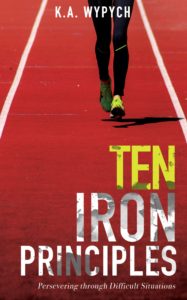Hey, so in the last blog, we talked about how to hone your big dream or vision into a goal that is Specific, Measurable, Achievable, Realistic, and Timely (a S.M.A.R.T. goal). Now what? How do you make a plan? For me, I begin by picking pick several big and small milestones or events that have to happen in order for me to reach my goal. So, let’s get started creating milestones to your goal.
Milestones to Your Goal
Milestones are important markers you need to hit when reaching your goal. For example, when my goal was to complete an Ironman triathlon, I selected several big milestones and some small milestones over the course of three years.
For the first year, the big milestone was to complete a marathon because triathletes run 26.2-miles at the end of an Ironman, and I had no experience with the distance. Some smaller milestones included training for that marathon and learning to swim.
(I decided to compete in an Ironman before I actually knew how to swim! The full story is in Ten Iron Principles!)
For the second year, my big milestone was to become a triathlete as I’d never entered a triathlon previously. I needed to get experience with the sport. A few small milestones were to complete a sprint distance and then an Olympic distance triathlons. I also needed to find out which Ironman I wanted to do and then find a corresponding training plan for the third year.
For year three, the big milestone was the Ironman itself and two half-ironman distance triathlons as small milestones, so I could get used to endurance events.
Preparation as a Milestone
At the time of the above video, I was getting ready for a 100-mile ultramarathon (using my same S.M.A.R.T. goal and milestone strategies) after another three-year plan (I like three-year plans!).
During the first year, I needed to heal as I had a hip injury. I went to physical therapy and hot yoga every week as a way to try to heal and get healthy. I also researched coaches who could help me put all the pieces together.
The second year, the goal or the milestone was preparation. I joined a 24-hour gym with a pool so that I could run during all types of weather and rehab any injuries I might have in the pool. To finish this year, I picked a raced and started base training for six months.
In the third year, I started running under my coach’s instruction for the 100-miler as well as smaller milestones of 50km, 50-miler, and 100km races.
To summarize, I start with a S.M.A.R.T. goal. Then, I pick steps I’m going to need to take along the way. With the Ironman plan, there was no way I could finish (or start) the race if I didn’t learn how to swim. My end goal was incumbent upon the steps being in place.
For your goal, think about what steps are absolutely necessary for you to achieve your dream. Write them down making sure you select a few big milestones and a few smaller ones.
Next week we’ll talk about how to develop a plan around your milestones!
(I did a few nighttime runs during the week of this video to prepare my mental game for running at night! Preparation is key to success!).
Love you guys!
K.
Author, Ten Iron Principles
Originally from 4/9/18




I’ve long shared an adage with all those who worked with me that reads “Failure to plan means you are planning to fail.” One of the best planning tips I can offer is to “Plan Left.” What this means is to start with your goal/end result, then plan backwards, working right to left along the schedule’s timeline. This allows you to identify scheduling issues sooner and enables you to revamp/rework you schedule to fit the available time you have. Another is “Don’t forget the float.” Float is that time period (hours or days) in a schedule that you have no activities planned for. This time, especially when it’s between major milestones, gives you some built-in recovery time in case something goes awry (not that that ever happens in real life).
I agree with you. Setting up milestones along the way creates small points that you “have” to get to. I also believe in float time. To complete the 100-miler, I kept a regular Sabbath day with no work, no exercise, and no writing. I still do. 🙂
Love this acronym, Specific, Measurable, Achievable, Realistic, and Timely (a S.M.A.R.T. goal), and the reminders you shared about getting to that finish line!! Your physical accomplishments continue to amaze me, and it’s obvious that your well-thought out plans help get you to those accomplishments!
The awesome thing is that creating a good plan applies to everything. What God showed me in athletics has translated into every other area of my life.
I’ve been sitting on the draft for a non-fiction book. I knew I needed to start building a social media platform, so spent time this week designing my website and creating a Facebook page, but wasn’t sure what to do next. This article has inspired me to start thinking about goals that will help move it toward publication. Next on the agenda – S.M.A.R.T. goals to connect with new people! Thanks for the motivation!
You can do it! Create the milestones and then the tasks associated with each. Focus on one task until you’ve got it down (or rolling).